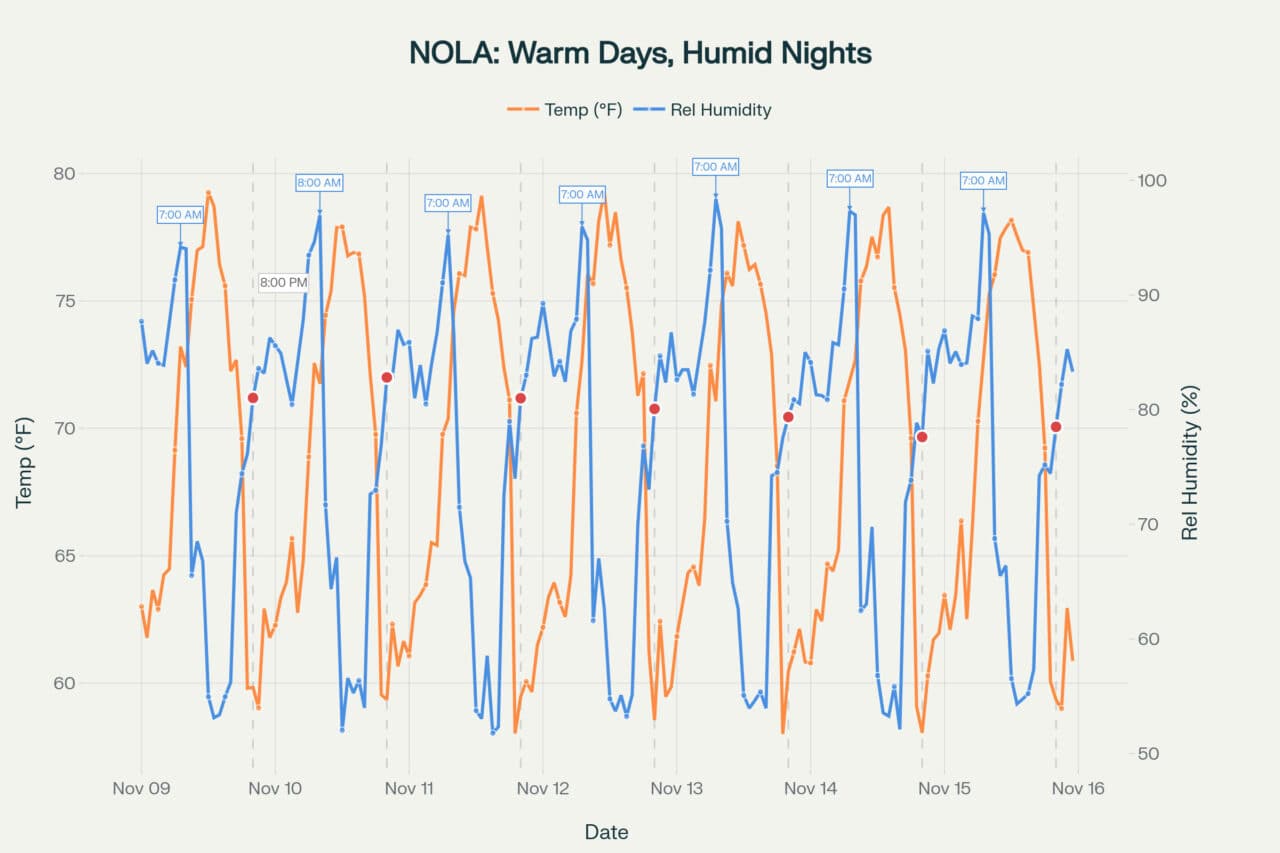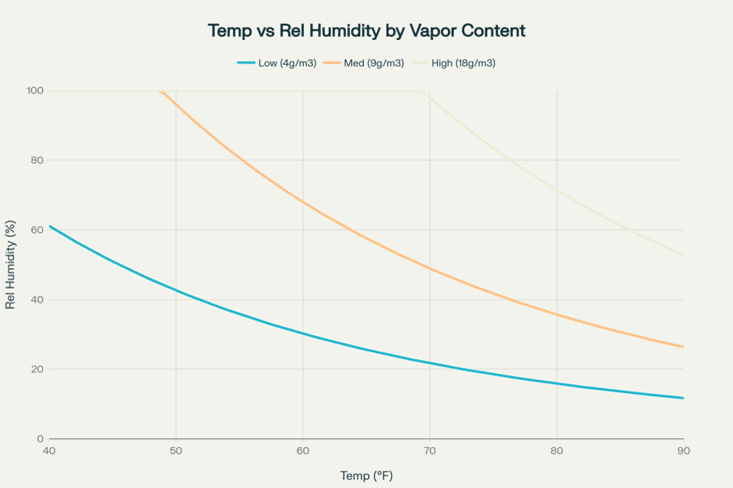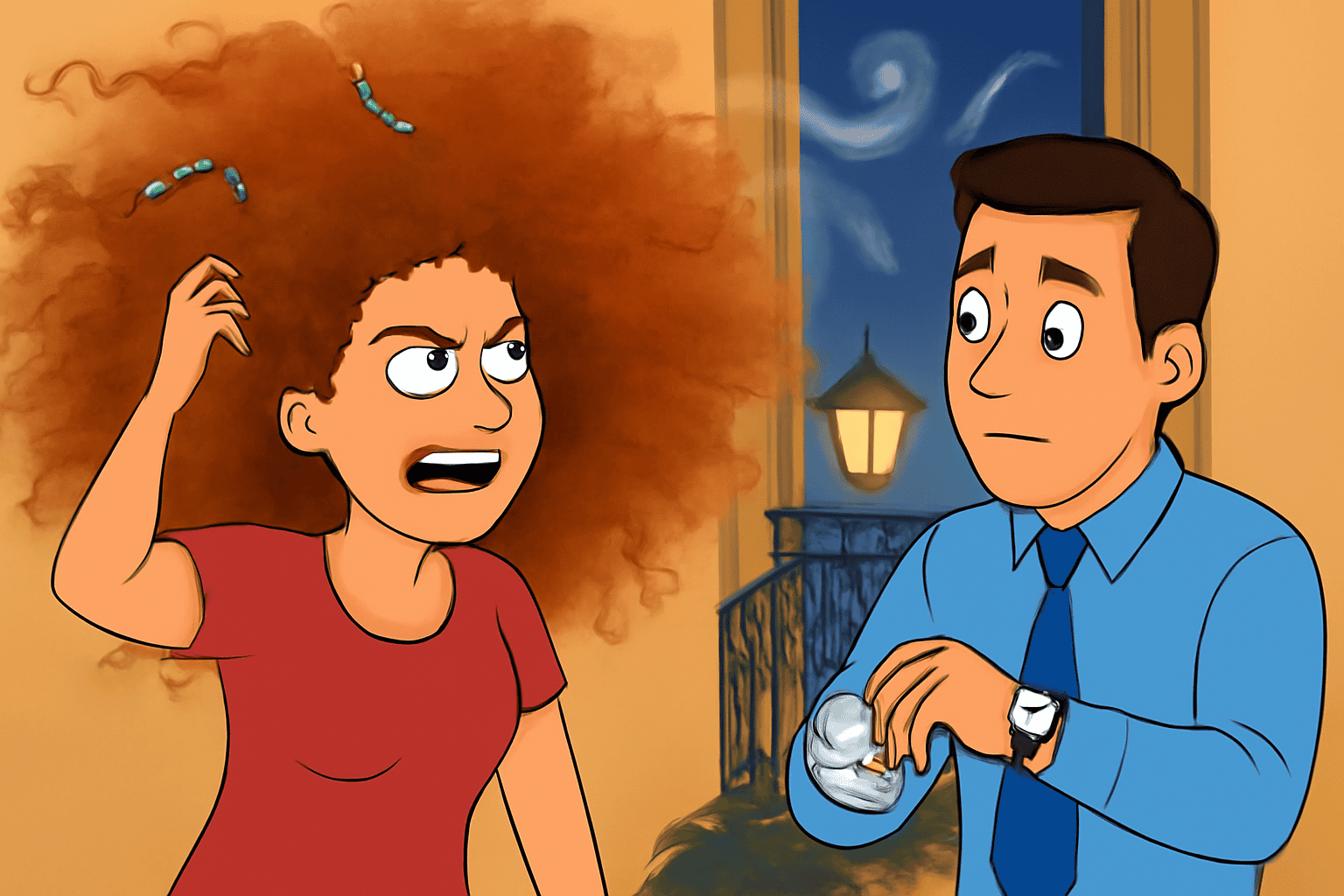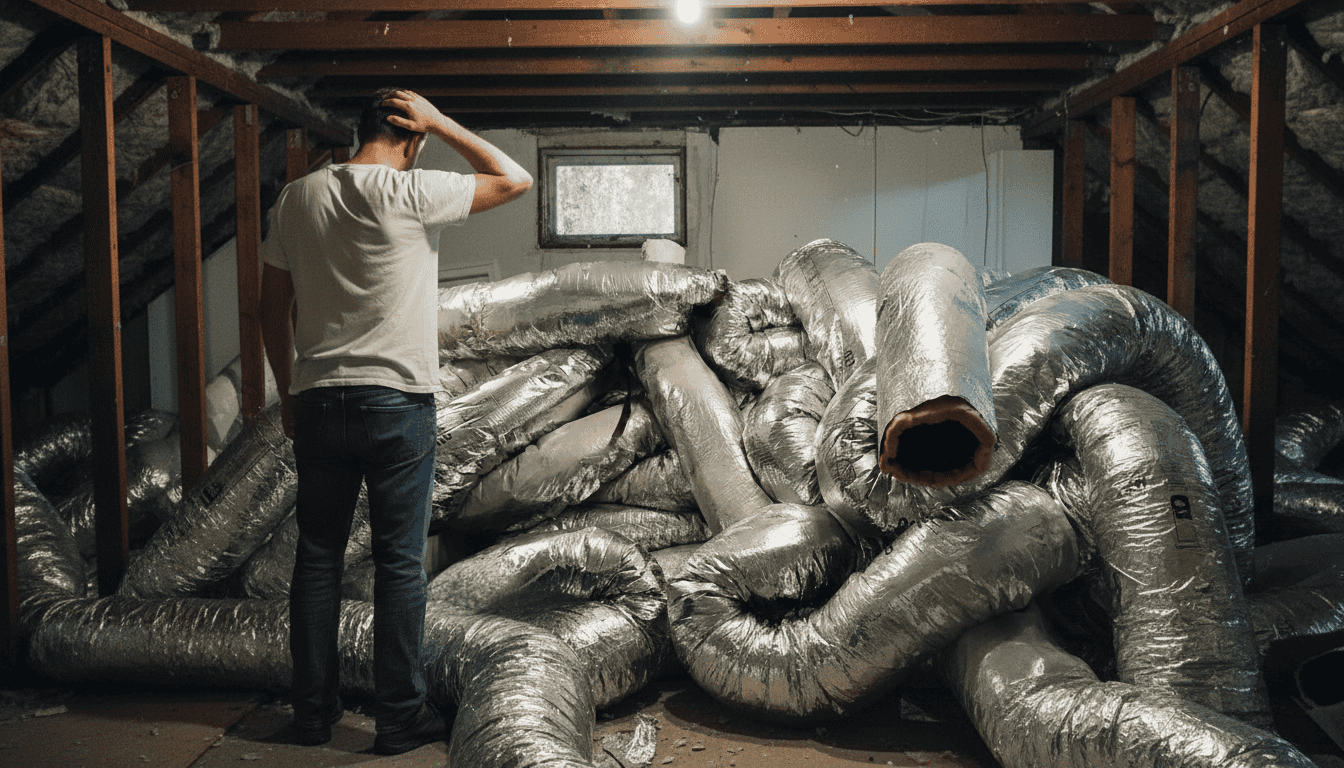Why Your Special Lady’s Hair Hates Louisiana Nights (And How to Keep Her Happy on Date Night)
If you live in Louisiana, you know the drill: spring rolls in with those glorious dry, sunny days that make everyone want to fling open every window and let the house breathe. The air feels crisp, the breeze is gentle, and for a few precious weeks, you almost forget you live in the down-yonder land of eternal humidity. Your date, girlfriend, or special lady is especially happy, her hair behaves, her curls stay defined, and she’s ready to face the world without a battle against frizz. But as the sun sets, something strange happens. The temperature drops, the air feels heavier, and suddenly, your partner is giving you that look, the one that says, “Close the windows and turn on the AC, now!”
You might be thinking, “It’s cooler outside than it was during the day. Why is she suddenly so bothered?” Well, let’s break down why your special lady isn’t just being dramatic, she’s actually got science (and a whole lot of experience) on her side.

Why Humidity Ambushes You at Night, even as Temps Drop
Here’s the catch: on those too-short-lived heavenly blue, mild, and dry Louisiana spring and fall days, just as NOLA festivals are coming to town, the air’s ability to hold moisture is at its max, so even with some water vapor, it feels dry and comfortable. But as night falls and the temperature drops, that same amount of moisture suddenly becomes a much bigger deal, because cool air can’t “hold” as much water. The air’s carrying capacity shrinks as it cools, making every molecule of water vapor count for more. This is why you end up feeling sticky at bedtime, even if you were basking in perfect comfort just hours earlier. The air reaches its saturation point faster, and that’s your cue to crank up the AC, your body’s way of chasing that refreshing, dry-afternoon feeling into the night.

The Science of Spring Nights and Frizz
During those perfect spring days, the air is dry and cool, especially compared to Louisiana’s usual swampy baseline. Your date’s hair stays smooth and frizz-free because the low humidity keeps moisture out of her strands. But as evening falls, the temperature drops, and the relative humidity skyrockets.
Hair is incredibly sensitive to humidity. When the air is dry, styled hair stays put. But when humidity rises, water molecules sneak into each strand, swelling the hair shaft and lifting the cuticle. This disrupts the hydrogen bonds that keep hair smooth, causing curls to pop, waves to go wild, and frizz to take over. If your girlfriend has spent time straightening or styling her hair, that work can be undone in minutes as her hair absorbs moisture from the air and reverts to its natural, often frizzier, state.

Why Your Special Lady Isn’t Overreacting
Your partner isn’t just being extra; she’s reacting to a real, measurable change in the environment. When the air is humid, hair absorbs moisture, swells, and loses its shape. For many people, especially those with curly or wavy hair, this means frizz, puffiness, and a general sense of chaos. Even if you’re comfortable with the cooler air, your date is dealing with a full-blown hair crisis. And let’s face it, no one wants to go out for a nice dinner feeling like they’ve got a halo of frizz.
The Date Night Dilemma
Here’s how a typical spring or exceptional fall evening goes in your house: You’re both excited for a night out. The day was beautiful, the air was dry, and your special lady’s hair looked amazing. But as you’re getting ready, the air inside starts to feel damp. She checks her reflection, boom, the frizz arrives! Suddenly, your partner is redoing her hair, reapplying product, and maybe even changing outfits to match her new, wilder look. Meanwhile, you’re standing by the door, checking your watch, and wondering if you’ll ever make your reservation on time.
How to Solve the Problem (And Keep Date Night on Track)
So, how do you keep your date happy and your plans running smoothly? Here are a few practical, relationship-approved solutions:
Embrace the AC (At Least for a Little While)
When humidity starts creeping in, turn on the AC for a bit. It cools the air and removes moisture, helping to keep the indoor humidity in check so your special lady’s hair stays smoother longer.
Invest in a Dehumidifier
If you’re committed to keeping the windows open but want to avoid the humidity spike, a small dehumidifier can help.
Timing Is Everything
Get ready a little earlier on spring nights; humidity rises as the sun sets, so give your date a head-start.
Stock Up on Anti-Frizz Products
Keep trusty serums, oils, or sprays on hand. A quick touch-up before you leave helps tame unexpected frizz.
Keep the Windows Closed at Night
When the humidity starts to rise, close up to maintain a stable indoor environment.
Oiling for Hair Health
Year-round routines with scalp and hair oils keep hair manageable in any weather.
Move to Arizona (or embrace the Louisiana humor)
If frizz is the nemesis, relocation or just laughter can go a long way.
Consider being only half-honest when she asks how her hair looks.
A Little Humor Goes a Long Way
Humidity and frizz are a rite of passage in Louisiana. Your “special lady” isn’t the only one who has had to redo her hair three times before dinner. Most of us in the South have a love-hate relationship with our few weeks of exceptional spring and fall days. The days are perfect, nights unpredictable. Humor and understanding can help keep your plans and relationship on track.
Final Thoughts
Your partner isn’t overreacting; she’s just responding to the very real effects of Louisiana’s nights. The air may be cooler, but it’s also more humid, and that’s a recipe for frizz. By understanding the science and taking a few simple steps, you can help keep her hair and your date night on track.
A dry, comfortable house is the real hero.
That’s where Diversified Energy comes in! Call us for better insulation, smarter ventilation, and energy-saving solutions to keep the frizz and fuss outside. In the battle between comfort and chaos, a well-dehumidified home (and happy hair) could be the secret to everlasting harmony.
Frequently Asked Questions
This is about how air’s moisture-holding capacity changes with temperature—a fundamental building science principle.
The Physics:
Warmer air can hold more water vapor. Cooler air can hold less. It’s not that water leaves the air; it’s that the same amount of moisture becomes a higher percentage of what the cooler air can contain.
Real Example:
At 75°F, air can hold about 13 grams of water per cubic meter before it feels “saturated”
At 55°F, that same air can only hold about 8 grams before reaching saturation
If you have 10 grams of moisture in that air, it feels dry at 75°F (10/13 = 77% humidity) but muggy at 55°F (10/8 = 125%—which means condensation forms!)
This is called relative humidity—it’s about the relationship between how much moisture is actually there versus how much the air can hold at that temperature.
Why This Matters for Your Hair & Home:
When evening cools the air, relative humidity spikes even though the actual amount of water vapor hasn’t changed. At night, the air hits saturation faster, causing:
Hair to absorb moisture and frizz
Windows to fog
Crawlspaces to get damper
Insulation performance to change
This is why closing windows and using AC at night helps—it removes moisture AND keeps air cooler, maintaining lower relative humidity.
Relative humidity (RH) is a percentage that compares actual moisture to the maximum amount air can hold at that specific temperature.
Simple Breakdown:
0% RH = Bone dry (desert conditions)
50% RH = Comfortable (air is holding half its maximum moisture capacity)
75% RH = Humid (air is holding three-quarters of its maximum—feels sticky)
100% RH = Saturated (air is holding all the moisture it can; any cooling causes condensation)
Why Louisiana Springs Feel Deceptive:
During daytime: 75°F, 50% RH → Feels absolutely beautiful and dry
During nighttime: 55°F, 80% RH → Feels suddenly sticky and humid
Same moisture in the air, but the cooler temperature makes it feel muggy because the air is “fuller” of moisture relative to its capacity.
Building Science Application
Understanding RH is critical for:
Insulation performance – Damp insulation loses R-value
Crawlspace health – High RH (75%+) encourages mold growth
Indoor comfort – Humans feel comfortable at 40-60% RH
Ductwork performance – High humidity causes condensation on cold ducts
Dew point is the exact temperature at which air becomes saturated and water starts condensing into visible moisture (dew, fog, or moisture on windows).
Key Concept
If air at 75°F has a dew point of 55°F, this means:
At 75°F → Air feels dry (moisture is well below saturation)
At 55°F → Air reaches saturation and moisture condenses
At 54°F → Moisture actively condenses (you see fog, dew on grass, fogged windows)
Louisiana Spring Example
During a typical spring afternoon:
Temperature: 75°F
Dew point: 55°F
Relative humidity: ~55% (feels perfect)
By 8 PM:
Temperature: 58°F
Dew point: Still 55°F (hasn’t changed much)
Relative humidity: ~92% (suddenly feels muggy)
By midnight:
Temperature: 52°F
Dew point: Still 55°F (hasn’t changed)
Relative humidity: Over 100% (condensation forms on windows, surfaces, and hair!)
Why This Matters
When outdoor temperature drops below the dew point, moisture condenses. This is why:
Windows fog at night (water is condensing on cold glass)
Hair frizzes (moisture is condensing into hair strands)
Crawlspaces get damp (cool concrete surfaces collect condensation)
Ductwork “sweats” (cold ducts surrounded by warm, humid air cause condensation)
It’s purely a mathematical relationship between temperature and air’s moisture-holding capacity.
The Formula (Simple Version):
Relative Humidity = (Actual Moisture ÷ Maximum Moisture Air Can Hold) × 100%
Practical Example:
Imagine a glass that holds 10 ounces (air’s moisture capacity):
At 75°F: Air’s capacity = 10 oz | Actual moisture = 5 oz | RH = 50% (comfortable)
At 55°F: Air’s capacity = 6 oz | Actual moisture = 5 oz | RH = 83% (muggy!)
The moisture didn’t increase – the container (air) got smaller!
Louisiana Spring Pattern:
3 PM: 75°F, 50% RH (sunny and dry)
5 PM: 65°F, 65% RH (cooling slightly)
7 PM: 58°F, 82% RH (getting sticky)
9 PM: 54°F, 95% RH (very humid, windows fogging)
This happens every single time temperature drops without significant additional moisture being added to the air.
Good question! AC does both – and the moisture removal is actually the mechanism.
How AC Works:
Cool the air past its dew point (inside the AC unit)
Moisture condenses as liquid water on cold surfaces
Water drains away (that’s the condensate line draining outside)
Dry air re-enters the home
Result: AC cools the air AND removes moisture simultaneously. That’s why turning on the AC on a humid evening makes the air feel less sticky even before it gets cold.
Building Science Principle:
This is called dehumidification through sensible cooling. When air cools below its dew point, water condenses out. You can feel this yourself:
AC turned on at 8 PM
Air temperature drops from 72°F to 68°F
Relative humidity drops from 85% to 60%
The room feels dramatically less humid despite only a 4-degree drop
Practical Application:
Turning AC on for 30 minutes on a humid night actively removes moisture
A standalone dehumidifier does the same thing (cools air slightly, collects moisture)
Both are much more effective than just opening windows or using fans
Hair is hygroscopic—it absorbs moisture from air—and this disrupts the structural bonds keeping hair smooth.
Hair Structure 101
Hair is made of protein fibers held together by:
Hydrogen bonds (water-based molecular connections that keep hair smooth and straight)
Disulfide bonds (stronger permanent structure)
What Happens When Humidity Spikes:
Moisture enters hair shaft – Water molecules sneak into the hair’s outer layer (cuticle)
Hair swells – Absorbed water causes the shaft to expand, roughly 30% in high humidity
Cuticles lift – The overlapping protective scales that lay flat lift up
Hydrogen bonds break – Moisture disrupts the bonds keeping curls defined and waves smooth
Frizz happens – Hair reverts to its natural, often curlier/frizzier state
The Numbers:
50% RH: Hair absorbs minimal moisture (stays smooth if styled)
75% RH: Hair absorbs enough moisture to lose definition (frizz appears)
90%+ RH: Hair is fully saturated with moisture (maximum frizz)
Why This Matters Beyond Hair
The same principle affects:
Insulation – Fiberglass insulation absorbs moisture and loses R-value
Wood – Humidity causes wood to swell and warp
Electronics – High humidity enables corrosion
Crawlspaces – Moisture absorption promotes mold growth
It’s about absolute humidity (actual moisture in the air) versus relative humidity (percentage of capacity).
Spring vs. Summer in Louisiana:
Perfect Spring Day (March/April):
Temperature: 75°F
Absolute humidity: 8 grams of water per cubic meter
Relative humidity: 55%
Feels: Perfect, dry, crisp
Typical Summer Day (July/August):
Temperature: 92°F
Absolute humidity: 15 grams of water per cubic meter
Relative humidity: 65%
Feels: Sticky and uncomfortable
Why Spring Nights Are Deceptive:
Even though spring has less total moisture in the air (absolute humidity is lower), the relative humidity can spike higher at night because:
Temperature drops significantly (from 75°F to 55°F = 20-degree swing)
Relative humidity jumps proportionally (55% → 85%+)
In summer:
Temperature might drop only 10 degrees (92°F to 82°F)
Relative humidity doesn’t spike as dramatically
Plus there’s already more moisture in the air (absolute humidity)
The Takeaway:
Spring gives you a false sense of dryness during the day, then ambushes you with humidity at night because of the large temperature swing. Summer is consistently humid, so your body adjusts. Spring humidity is unexpected and feels worse.
High humidity impacts several building science systems
Insulation Performance:
Dry fiberglass: R-3.5 per inch
Moisture-saturated fiberglass: R-1.5 to R-2 per inch (50%+ loss of effectiveness)
This is why crawlspace insulation fails in humid Louisiana climates
HVAC System Performance:
Humid air is harder to cool (requires more energy to remove moisture)
Ducts in humid environments experience condensation, leading to mold growth
Return air leaks pull humid air into system, reducing cooling efficiency
Crawlspace Health:
Above 75% RH, mold growth accelerates
Moisture on wooden joists causes rot
Ductwork “sweats” as cold air meets warm, humid crawlspace air
Indoor Air Quality:
High RH promotes dust mite proliferation (above 50% RH)
Mold growth in hidden spaces (ducts, crawlspaces)
Musty odors from moisture-trapped in insulation
Solutions
This is why building science professionals recommend:
Sealed crawlspaces (control humidity at the source)
Spray foam ductwork (eliminates condensation risk)
Proper ventilation (removes moisture-laden air)
Dehumidification (maintains 40-60% RH indoors)
Humans feel most comfortable in a specific range of temperature AND humidity together, not just one or the other.
The Comfort Zone (ASHRAE Standards)
Summer Comfort:
Temperature: 73-77°F
Relative humidity: 40-60%
Winter Comfort:
Temperature: 69-73°F
Relative humidity: 30-50%
Key Insight:
At 72°F and 30% RH, you feel cold and dry.
At 72°F and 70% RH, you feel warm and sticky.
Same temperature, but dramatically different comfort!
Louisiana Spring Night Issue
On a spring evening:
The temperature might be a pleasant 65°F
BUT relative humidity is 85%+
Result: Feels cold AND sticky (worst of both worlds)
People turn on AC to lower both temp AND humidity
Building Implications:
This is why proper humidity control (through dehumidification, ventilation, or sealed crawlspaces) improves comfort more than temperature alone. A home at 72°F and 45% RH feels more comfortable than one at 72°F and 75% RH, even though the temperature is identical.
Dew point is a direct measure of absolute moisture in the air, it doesn’t lie.
Louisiana Dew Point Patterns:
Spring (March-May):
Morning: Dew point 45-50°F
Afternoon: Dew point 50-55°F
Evening: Dew point stays constant, but temperature drops below it (condensation forms)
Summer (June-August):
Morning: Dew point 65-70°F
Afternoon: Dew point 70-75°F (stays consistently HIGH)
Evening: Dew point barely drops; stays humid all night
Fall (September-November):
Morning: Dew point 45-55°F (drops significantly overnight)
Afternoon: Dew point 50-60°F
Evening: Temperature drops, humidity spikes
Why This Matters
Spring nights are worse than summer nights because:
Spring dew point is 15-20 degrees lower than summer
When the temperature drops 15-20 degrees in spring → Hits dew point → Condensation forms
In summer, temperature rarely drops below dew point → Stays humid all night, but no sudden condensation
For Your Home:
Spring: Close windows at sunset (prevent humidity infiltration)
Summer: Use AC continuously (remove constant moisture)
Fall: Same as spring (large temp swings = condensation risk)
Resources
ASHRAE: Residential Comfort Standards
Building Science Corporation: Moisture & Humidity
U.S. Department of Energy: Home Energy



















